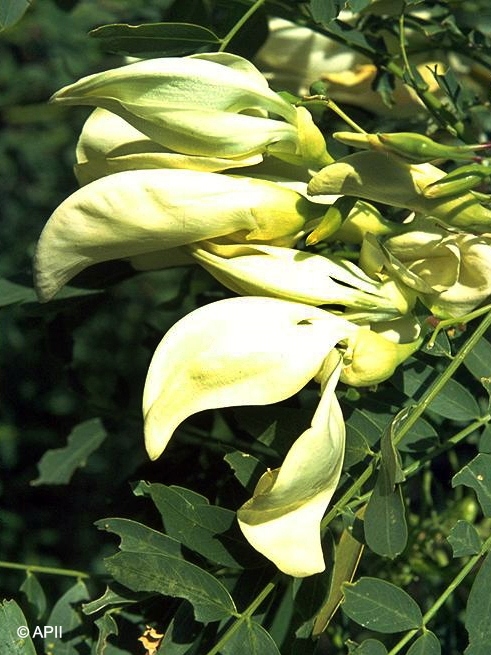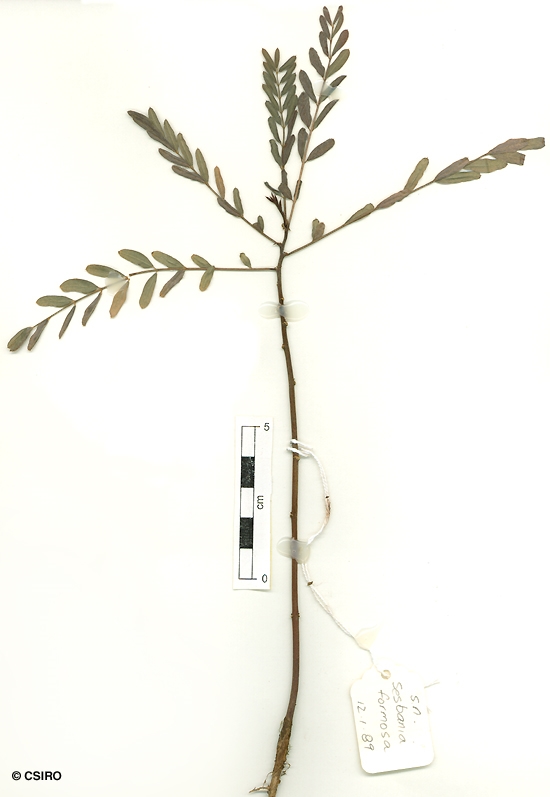Australian Tropical Rainforest Plants - Online edition
Sesbania formosa (F.Muell.) N.T.Burb.
Click/tap on images to enlarge

Flowers. © Australian Plant Image Index (APII). Photographer: M. Fagg.

Habit and leaves. © R.L. Barrett

Cotyledon stage, epigeal germination. © CSIRO

10th leaf stage. © CSIRO

Scale bar 10mm. © CSIRO
Family
Burbidge, N.T. (1965) Australian Journal of Botany 13: 115.
Common name
White Dragon Tree; Vegetable Humming Bird; Swamp Corkwood; Dragon Tree; Dragon Flower Tree
Stem
Bark pale and corky.
Leaves
Flowers
Inflorescences shorter than the leaves. Flowers large, calyx about 20-25 mm long, lobes about 5 mm long. Petals variable, distinctly clawed, larger petals about 90-100 mm long. Stamens 10, the filaments of nine stamens fused to form a tube open on one side, one stamen free. Ovary glabrous, stalked, containing numerous ovules.
Fruit
Seedlings
Distribution and Ecology
Synonyms
Agati formosum F.Muell., Fragm. 2: 88(1860), Type: Fitzmaurice River, Oct. 1855, F. Mueller: lecto: MEL 1336. Sesbania grandiflora Poir., : ().
RFK Code
900
Copyright © CSIRO 2020, all rights reserved.

Web edition hosted at https://apps.lucidcentral.org/rainforest




